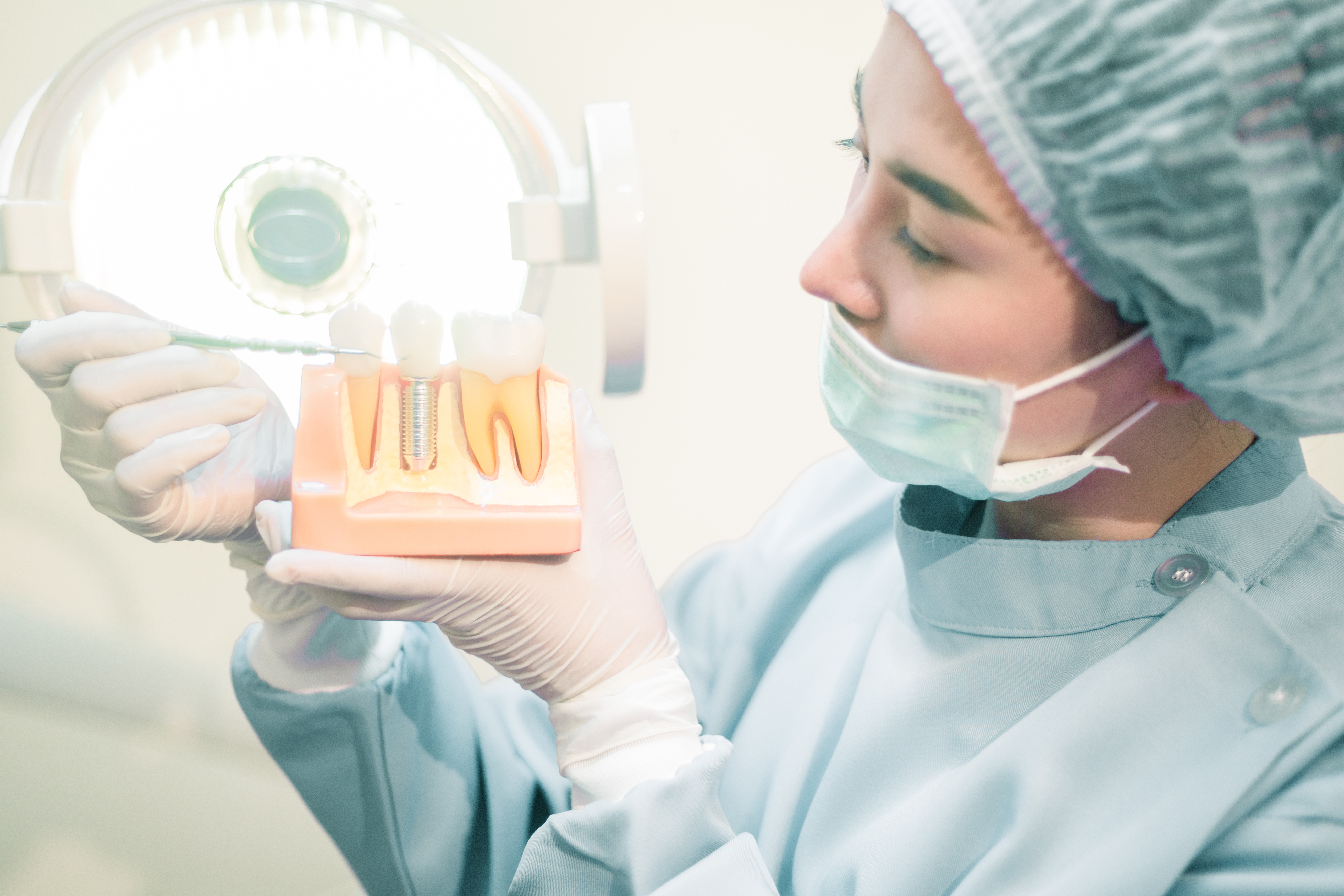
Dental Implants: Benefits, Procedures, and Risks
Dental implants can be an excellent solution for replacing damaged or lost adult teeth. Before deciding to undergo this procedure, it is essential to understand the benefits, procedure details, and potential risks.
What Are Dental Implants?
Dental implants are a surgical procedure to insert artificial teeth. These artificial teeth consist of two separate parts: the root and the crown.
Typically, the root is made of titanium, although ceramic options are also available. The root resembles a screw with a hollow center, which is inserted into the jawbone.
Once the root is securely in place and the wound has healed, the final restoration will be done by attaching dental crowns, bridges, or dentures.
There is no need to worry about dental implants developing cavities, becoming loose, making noise, or causing damage to surrounding tissues.
These artificial teeth are permanent, biocompatible, and the artificial root integrates with the jawbone.
However, maintaining oral hygiene and dental cleanliness is crucial to prevent infections around the implant.
Benefits of Dental Implants
The primary functions of dental implants are to alleviate pain caused by tooth damage, restore tooth function, and enhance the appearance of teeth without damaging or eroding adjacent teeth. This allows comfortable eating and increases your confidence in social settings.
Who Can Get Dental Implants?
Individuals who have lost one or more teeth may be recommended for dental implants if the cause is:
- Cavities
- Root fractures
- Bruxism (habit of grinding or clenching teeth)
- Gum disease
- Facial injuries
- Congenital absence of certain teeth
Who Should Not Get Dental Implants?
However, some conditions may prevent you from undergoing this oral surgery, including:
- Being under 18 years old, as the jaw is not yet fully developed.
- Having unhealthy oral tissues.
- Having gum health issues.
- Severe tooth damage.
- Insufficient jawbone to support the implant or bone graft.
- Bone healing disorders.
- Smoking or using tobacco products.
- Poor oral hygiene.
- Certain medical conditions such as autoimmune diseases.
Preparation Before Dental Implants
Before the procedure, you should prepare by:
- Listing all medications and supplements you are currently taking.
- Informing your doctor if you are taking blood thinners medication (anticoagulants), as the dental surgeon may need to coordinate with your primary doctor to decide whether you need to stop taking the medication before the procedure.
- Undergoing a health check-up with your primary doctor to ensure there are no conditions that could reduce the success rate of the dental implant.
- Discussing sedation options with your doctor to help you relax during the procedure.
- Arranging for a driver or asking a friend to take you home if you plan to use sedatives.
Dental Implant Procedure Details
The steps generally involved in this surgical procedure include:
1. Anesthesia: The first step is administering local anesthesia. You will be conscious during the surgery but will not feel pain. Sedation is often provided along with anesthesia.
2. Creating incision: Once the anesthesia takes effect and you are relaxed, the doctor will make an incision in the gum to expose the jawbone clearly.
3. Jaw preparation: The doctor will use special tools to create an opening in the jawbone, matching the diameter of the implant root.
4. Implant placement: The implant is inserted into the jawbone once the opening is ready.
5. Closing the incision: The oral surgeon will close the incision with stitches once the implant is securely in place.
Healing Time for Dental Implants
After the surgery, you must wait several months for the implant site to heal fully before safely completing the final restoration.
During the healing period, you will be given a temporary restoration that can be removed. To ensure proper healing, your doctor will usually advise you to:
- Take prescribed antibiotics to avoid infection and other medications as directed.
- Avoid heavy lifting for at least 72 hours after the procedure to reduce the risk of swelling and pain.
- Chew using the healthy side of your mouth. If implants are placed on both sides, consume soft foods for several days after the procedure.
- Brush and floss regularly.
- Clean the implant site as directed by your doctor.
Risk of Complications
Like other medical surgeries, dental implants may have some side effects, including:
- Infection.
- Sinus damage.
- Nerve damage.
- Incorrect implant placement.
- Allergic reactions to the titanium implant (extremely rare).
However, these risks are low, provided you undergo the procedure under a professional and experienced oral surgeon.
Bluecross Medika International is a clinic in The Sanur area which has international standard services in the fields of plastic surgery, hair transplant, aesthetics and dental care.
Bluecross has collaborated with a number of countries such as South Korea, Brazil and Turkey and is now present in Bali to bring doctors from abroad and modern technology with international quality services for you.
Contact The Sanur now to schedule your consultation and dental crown placement!
Related Articles

Mole surgery is a safe procedure with a relatively high success rate. What preparations are needed ...

Kidney stones (nephrolithiasis) are hard objects formed from chemicals in the kidneys. Once formed, the stone ...

Retinal detachment, also known as retinal ablation, is an eye condition requiring immediate medical attention. Here ...

